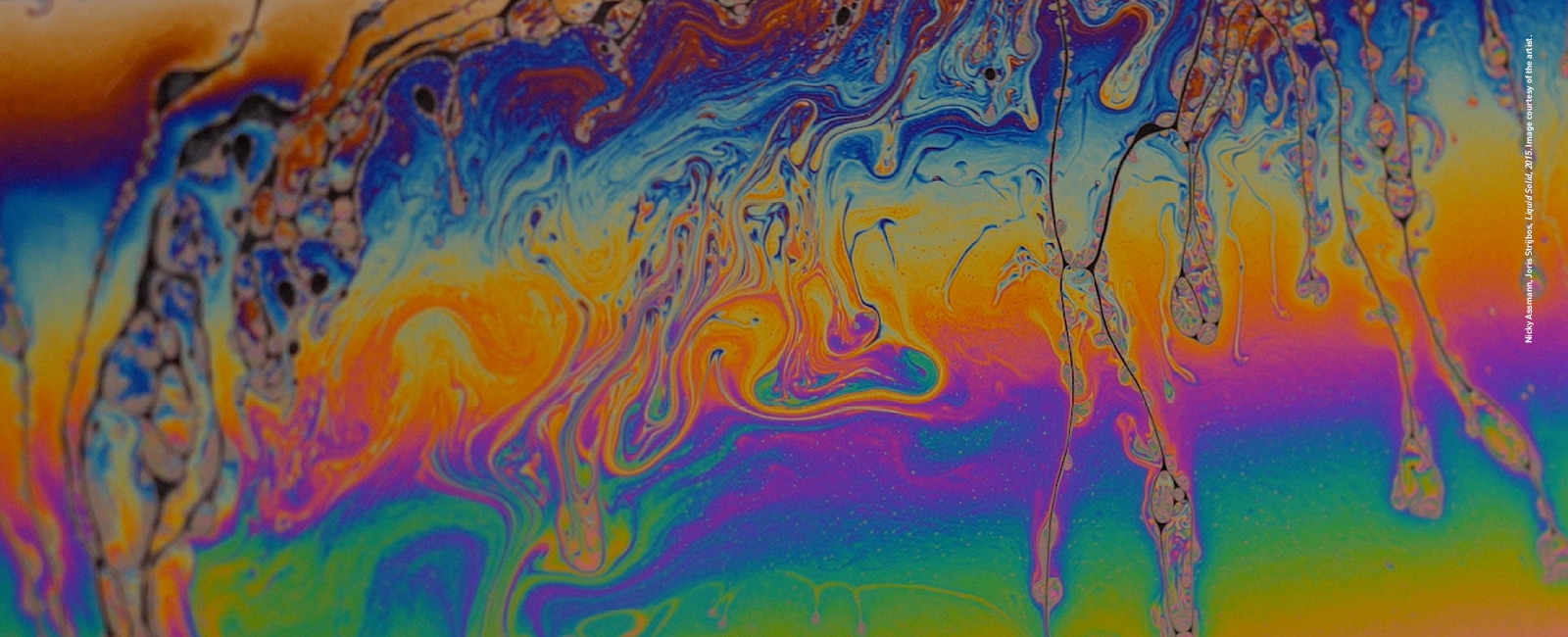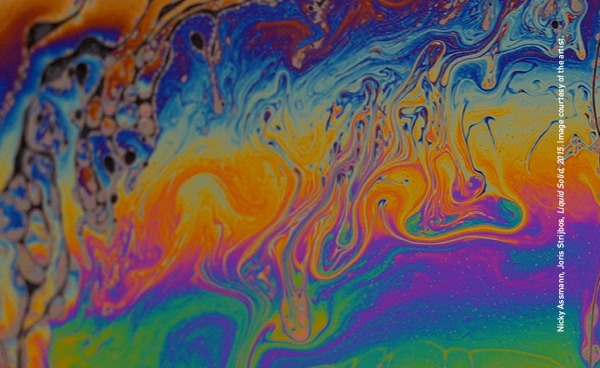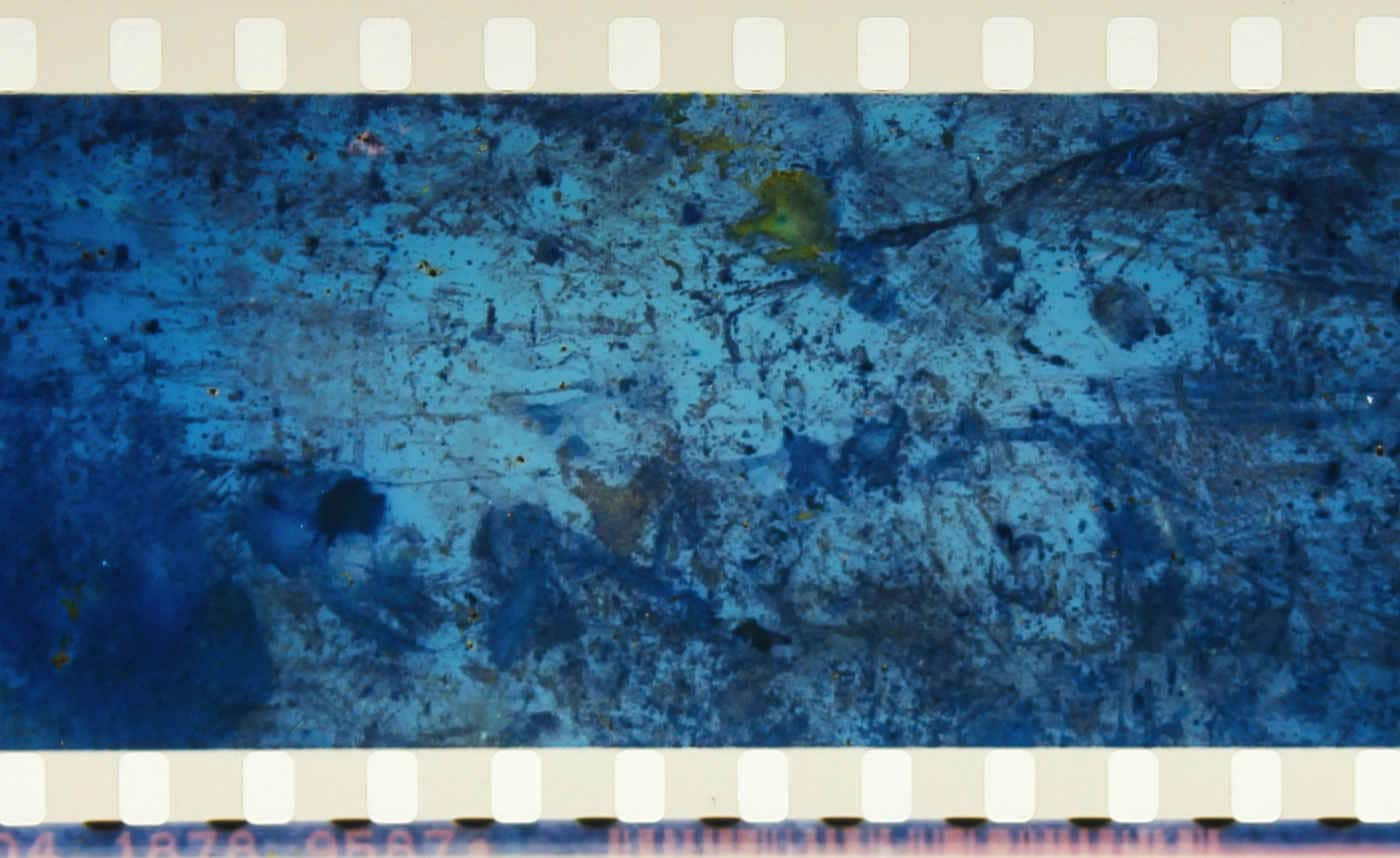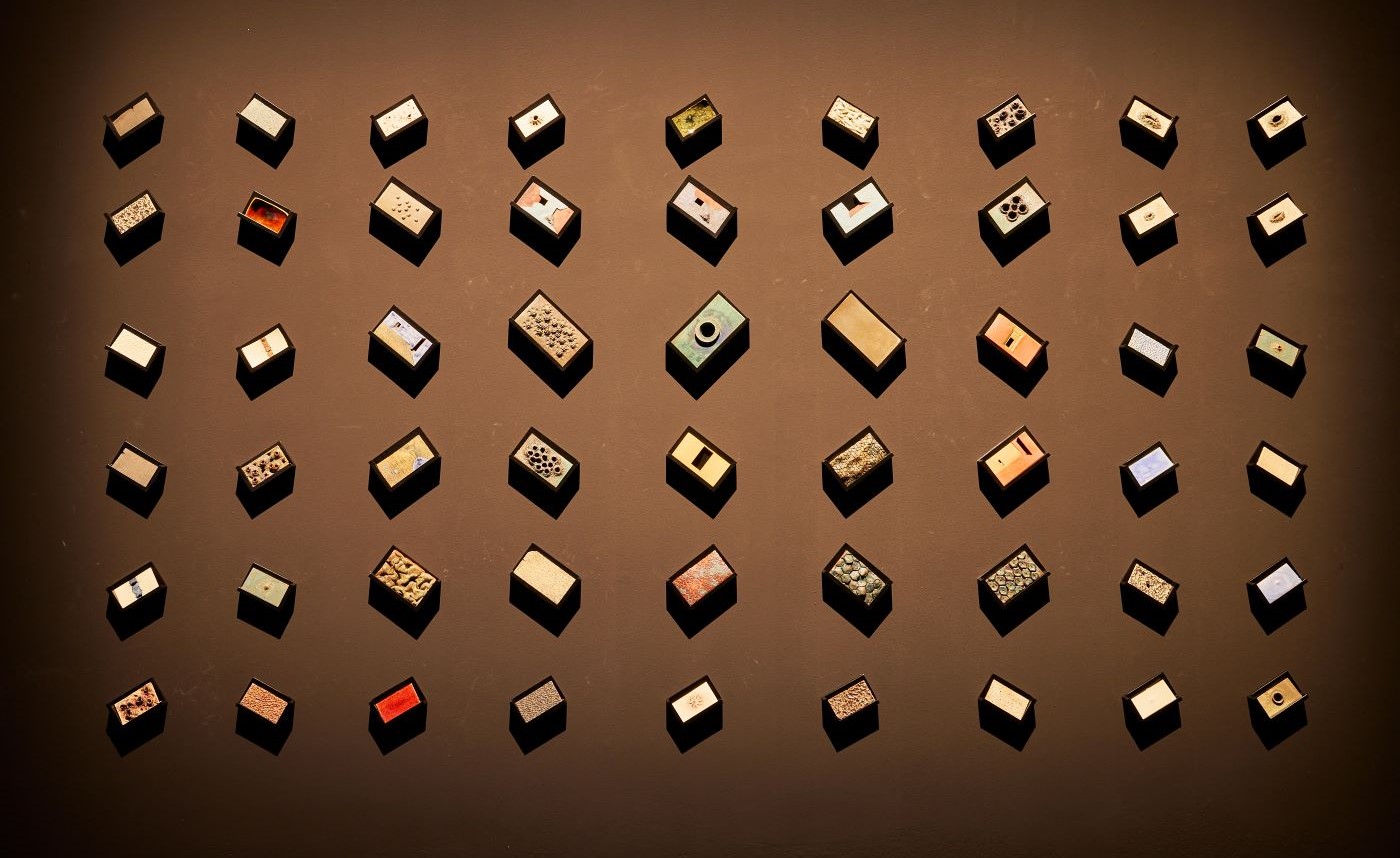
EXHIBITION



EXHIBITION
Altered States: Experiments in Moving Image
The exhibition features a select group of local and international artists and filmmakers who push the boundaries of what moving image can be by employing everyday materials, cameraless techniques, chemical and ecological processes in their experimental filmmaking practices.
From the saturated micro-world of ‘soap film’, where surface tension and light combine to create vibrant colours and patterns, to the contemplative and durational act of melting wax which speaks of the passing of time, the works in this exhibition challenge traditional visual narratives and reveal the transformative possibilities of film, offering new ways of seeing and understanding the moving image.
Advisory: This exhibition includes flashing lights from the projections which may cause seizures in people with photogenic or photosensitive epilepsy.
Admission Times
(Last admission: 6pm)
Fri – Sat: 10am – 9pm
(Last admission: 8.15pm)
Ticketed Admission
Adult: S$5, Child: S$5
Tourists:
Adult: S$5, Child: S$5
Explore the Exhibition
-

Material Experiments: From Scratch to Digital
-

Nicky Assmann and Joris Strijbos
-

Youki Hirakawa
-

Toh Hun Ping
-

Sapphire Goss
-
Material Experiments: From Scratch to Digital
Experimental filmmaking has always engaged in one form of material intervention or another. Evolving from conventional and linear narrative structures and foregrounding the ‘handmade’, artists took to scratching, bleaching, submerging, burying, pasting and painting on analogue film strips in an attempt to capture or uncover unexpected cinematic qualities of both medium and material.
Through coincidence or controlled calculation, science and creativity collide as the physical and chemical interactions of these experiments yielded fascinating, often mesmerising results.
Whether it’s Len Lye’s frenetic scratch films, Stan Brakhage’s poetically macabre found-montage of dead moths, or Tomonari Nishikawa’s irradiated films, the artists in this section of the exhibition use their hands and their environment in search of new visual languages for the cinematic space.
As image-capturing and projection technology progressed rapidly over the decades and now with the acceleration of artificial intelligence in relation to artmaking, there is still a yearning for the tactile and sensorial – for the ‘yet to be seen’ magic in the moving image.
Artists in this section:
- Louise Bourque
- Stan Brakhage
- Cécile Fontaine
- Lynn Loo
- Len Lye
- Tomonari Nishikawa
- Gotot Prakosa
- Jennifer Reeves
Featured artworks
4-

Stan Brakhage. Mothlight (1963, 16mm, colour, silent, 3 min 13 sec).
Courtesy of the Estate of Stan Brakhage and Fred Camper (www.fredcamper.com).
-

Lynn Loo, washi series (2016, 16mm, colour, sound).
Courtesy of the artist
-

Tomonari Nishikawa. sound of a million insects, light of a thousand stars (2014, 35mm, colour, sound, 2 min)
Courtesy of the artist
-
Nicky Assmann and Joris Strijbos
Liquid Solid is a collaborative project between Rotterdam-based artists Nicky Assmann and Joris Strijbos, that captures the freezing process of a soap film.
The film was created as part of the Ars BioArctica residency at the Kilpisjärvi Biological Research Station in the most northern part of Finland, where temperatures range from -6 to -25 degrees Celsius. This sub-zero landscape provided an ideal and unique environment for Assmann and Strijbos to explore the aesthetics behind the physical transmutation of matter at its extreme, and the exact moment of change from a liquid to solid state of a soap film.
In Liquid Solid, the colourful and iridescent qualities of the soap’s liquid membrane slowly disappear as it freezes, leaving a colourless surface where only ice crystals remain. These ice crystals eventually transform into complex fractal-like patterns, due to an accelerated freezing process which occurs at exceptionally low temperatures.
A cinematic experiment that unfolds in real time, Liquid Solid is a hypnotic visual experience imbued with scientific curiosity. The accompanying soundscape is an otherworldly blend of whale songs and recordings of electro-magnetic signals from the surrounding northern lights.
Nicky Assmann is a visual artist with a background in Film and ArtScience. Assmann practice explores the interplay of light, colour, motion, and natural phenomena. She experiments with physical processes in the form of kinetic light installations, videos and audiovisual performances.
Joris Strijbos’s work focuses on the synaesthetic relation and interaction between moving image and sound. His artistic research focuses on cybernetics, swarm intelligence, communication networks and emergent systems.
Credits
Liquid Solid was made possible with the generous support of Creative Industries Fund NL, Gemeente Rotterdam, The Finnish Society of Bioart.
Featured artworks
4-
 Exhibition view of Liquid Solid at ArtScience Museum
Exhibition view of Liquid Solid at ArtScience Museum -

Filming of Liquid Solid in very low temperatures during artist in residence
Image courtesy of the artists
-
-
Youki Hirakawa
Three candles are lit and laid on their sides in an experiment which accelerates the speed of burning. Gradually, the melting wax begins to pool, drawing an ethereal path of passing time.
In this minimalist vigil, viewers experience a cinematic measure of the passing of time – from a bright and steady yearning, to the fluid and opaque inevitable – there is a profound awareness that all things are connected, and that everything has a duration.
Deeply affected by the world-changing events of the Fukushima nuclear power plant accident in Japan on 11 March 2011, Hirakawa maps the slow immolation of his burning candles to humanity’s self-destructive tendencies. Yet in this immense scale, the artist heightens the symbolic power and fragility of the image, offering a sense of promise and renewal as the video loops back to the beginning, and the candles are restored to their original state.
Youki Hirakawa is an artist based in Aichi, Japan, whose works – in film, photography and installation – explore the mysterious and immeasurable sense of time, loss and longing inspired by archaeology, geology and alchemy.
Known for his monochromatic and serene cinematography and use of everyday and natural objects in conveying abstractions of reality, Hirakawa’s astute observations of the structure of things are both hypnotic and alluring – instilling an unwavering curiosity about the enigmatic nature of time.
Featured artworks
4-
 Exhibition view of Fallen Candles – Triplet at ArtScience Museum
Exhibition view of Fallen Candles – Triplet at ArtScience Museum
-
-
Toh Hun Ping
An experimental adaptation of stop-motion filmmaking, Toh Hun Ping hand sculpted six hundred individual ceramic reliefs which were scanned and animated frame-by-frame, an exercise that marries both material and medium. The resulting film, divided into three chapters, shows each ceramic relief in rapid succession, culminating into a stroboscopic crescendo where patterns dance, morph and pulsate.
Expanding on the idea of movement, Hun Ping subverts conventional visual structures through principles of motion perception. By alternating positive and negative scans, the artist destabilises the viewer’s experience through a series of undulating, flickering images. This effect of apparent motion is caused by a perceptual illusion when images are presented consecutively in a short time span.
Contrasting between the enduring nature of ceramics against the fleeting form of moving image, Hun Ping expounds on death, the possibility of the afterlife, the natural world and time. The artist invites visitors to touch the ceramic reliefs that were painstakingly sculpted over the course of two years at Pinch Ceramics Studio, Singapore.
Toh Hun Ping is a video artist, film researcher and writer. His video works express broad themes of resistance, travel, time and loss. He has contributed key research to film programmes at Asian Film Archive, the National Museum of Singapore and more. He also runs the Singapore Film Locations Archive, an important private collection of video films made in Singapore that record the historical transformation of city state’s urban and rural landscapes.
Featured artworks
4-
 Exhibition view of Dance of a Humble Atheist at ArtScience Museum
Exhibition view of Dance of a Humble Atheist at ArtScience Museum -
 Exhibition view of Dance of a Humble Atheist at ArtScience Museum
Exhibition view of Dance of a Humble Atheist at ArtScience Museum -
 Exhibition view of Dance of a Humble Atheist at ArtScience Museum
Exhibition view of Dance of a Humble Atheist at ArtScience Museum
-
-
Sapphire Goss
In Revenants: Optographic Animation, UK-based artist Sapphire Goss draws the connection between our natural environment and the practices of handmade cinema, using experimental filmmaking techniques to create new worlds from light, time and chemicals.
Goss’ practice of scratching and shooting on expired film stock yielded unexpected results – landscapes seemed to emerge from the celluloid imperfections. Increased static and grain caused by the expired emulsion seamlessly blend with the light on water, and accidental chemical stains form into clouds. Her experimental filmmaking process engendered a strange and sublime impression of Kent, an area on the south coast of the UK known for its rich geological heritage.
The title of this work references ‘optography’, a common 19th century belief that the eye records the last image seen before death. The collection of images in Revenants is an homage to the cosmos and the medium of film, showing how an alternate world can be created through a series of chemical reactions. Goss invites the viewer to observe the eye that sees and records this world, as if accessing the memories of the land just before its moment of death.
Sapphire Goss is an artist who works with moving image, photography and other lens-based methods. Using obsolete technologies, she creates imagery using unexpected materials, looping and processing images to create otherworldly landscapes. As part of her sustainable filmmaking practice, she develops her films using a caffenol process, employing a home-made solution composed of instant coffee, Vitamin C powder and baking soda.
Featured artworks
4-
 Exhibition view of Revenants: Optographic Animation at ArtScience Museum
Exhibition view of Revenants: Optographic Animation at ArtScience Museum -
 Revenants: Optographic Animation (scan of rushes)
Revenants: Optographic Animation (scan of rushes)
-

Altered States Spotlight Tour
25 Jan (Sat) | 2pm – 2.45pm
Altered States: Experiments in Moving Image Gallery, Basement 2
S$5 per participant for Altered States exhibition ticket holders
Join UK-based experimental filmmaker Sapphire Goss and exhibition curators Jerome Chee and Rachel Wong in this behind-the-scenes tour of Altered States: Experiments in Moving Image, an exhibition exploring material interventions in film.
See MoreOffers
You May Also Like
-
EXHIBITION
Future World:
Where Art Meets ScienceFuture World: Where Art Meets Science at ArtScience Museum is currently closed for revamp works. We apologise for any inconvenience caused.
Immerse yourself in a world of art, science, magic and metaphor through a collection of digital interactive installations.
-
-








